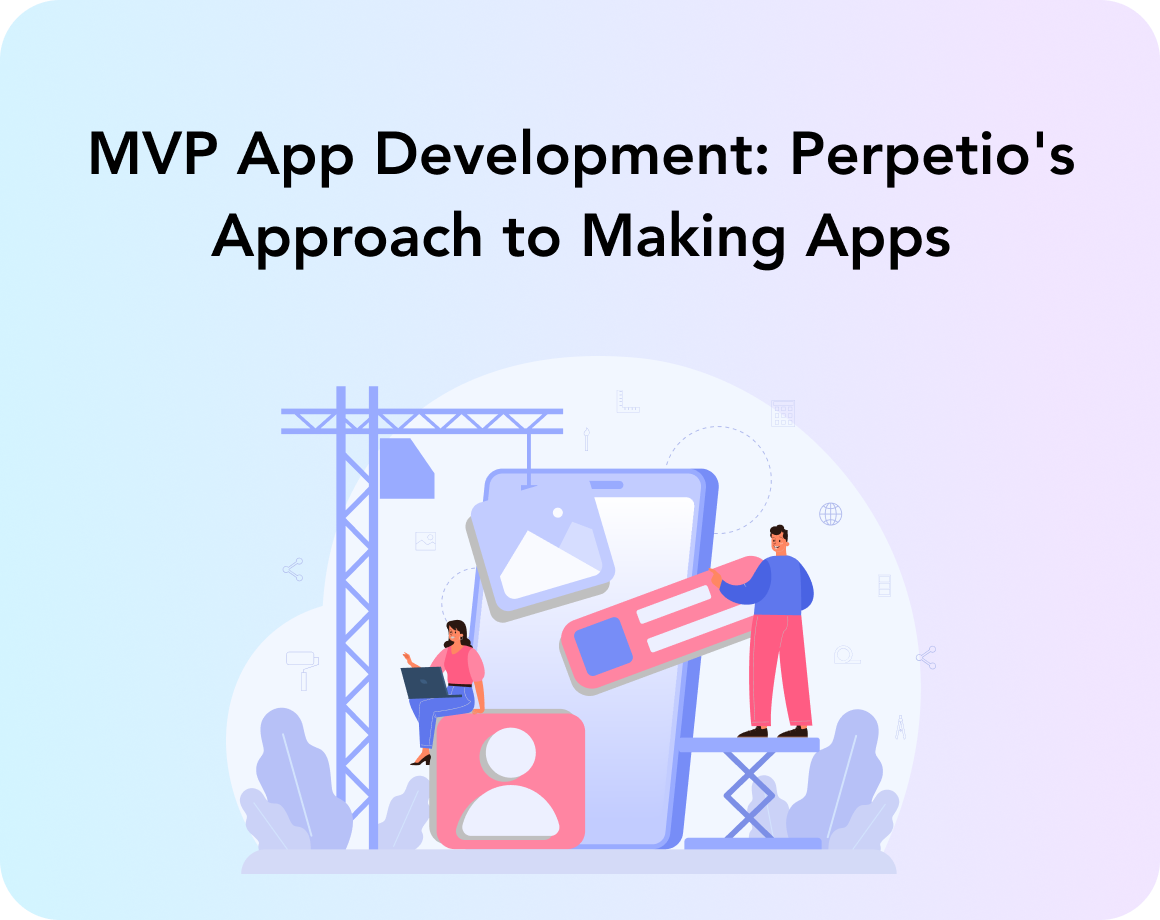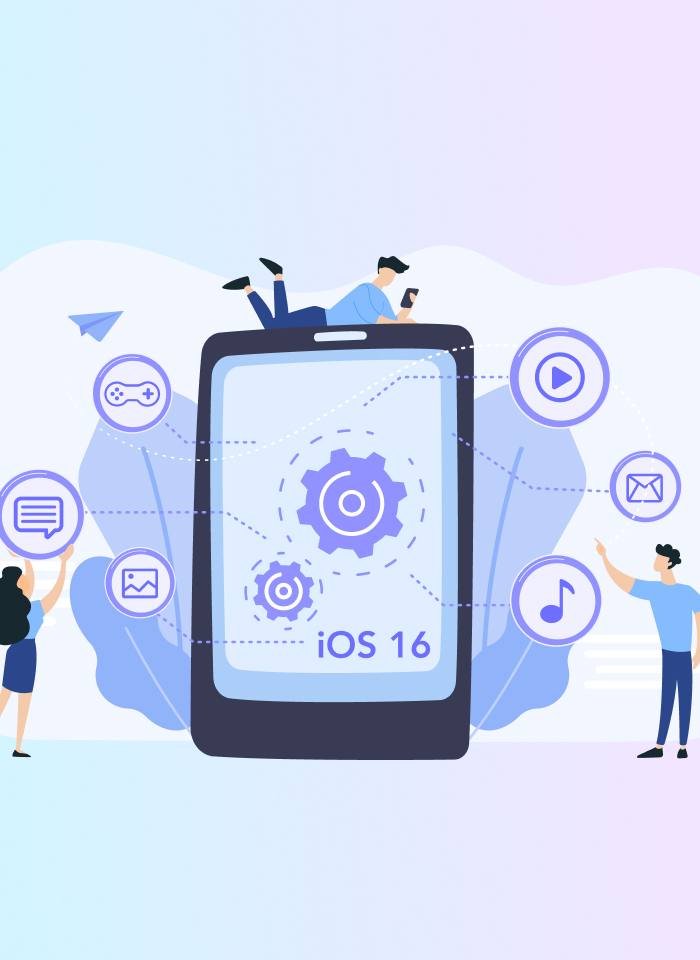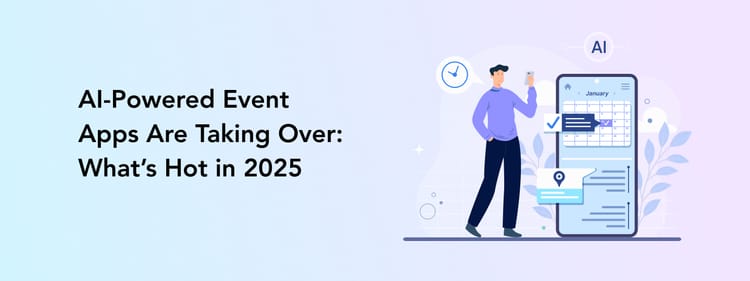When a startup company contacts us for a mobile app development service, our suggestion in many cases is the MVP (minimum viable product) approach. Why? Because it is a method of achieving business goals with no extra hustle. In other words, it is a way to present a full-fledged, effective product in a short time and on a budget. Let’s explore how.
Benefits for Business From Developing an MVP
Don’t let “fast and low-cost” confuse you — MVP app development presents a high-quality solution that centers around careful research and organic scaling up. What are some of the main advantages of the MVP mobile app development approach?
Optimize resources
Let’s start with the elephant in the room. MVP application development is preferred by so many startups because it is a rational, budget-friendly method to roll out a competitive product. As compared with the traditional mobile app development approach, MVP offers a more time-effective and, as a result, less costly process. A young startup can get a mobile app for around $20 000 - 30 000.
Reach the market in the shortest terms
Mobile app MVP development is a perfect strategy for those startups who want to try out an idea without sitting around for months until the development process is finished. If you have a product hypothesis you can’t wait to see on the market, it might be wise to launch an MVP and prove your worth in action.
Get real feedback
No one can give you better feedback than the users themselves. Trust us — they won’t hide the truth to make you feel better; rather the opposite. Minimum viable product app development gets us in touch with the real audience right away to base your decisions and app updates on users' needs and desires.
Scale up organically
Rolling out an extensive, feature-rich application is a way to go if you already secured a loyal audience through existing online or offline products or are ready to make a big shot. Otherwise, it makes much more sense to start with an MVP and add a wider functionality respectively to how your mobile product grows. No need for extra investments or pitching sponsors empty-handed.
MVP Development: 6 Essential Steps for a Quick and High-Quality Entry into the Market
After we discussed all the whys, let’s move on to hows. Time to discuss the essential steps of the MVP app development process.
Conduct preliminary market and user research
Before creating a product, any development team needs to understand its goals, target audience, and place on the market. Otherwise, it is just a shot in the darkness. Our task is to make a product that helps people solve particular problems while being pleasant to use and having something competitors don’t.
To have all this information, we need to conduct preliminary research, including
- Studying the market and available solutions
- Looking into competitors, defining their advantages and disadvantages
- Analyzing the potential users and their pains; drawing a user persona
- Defining your competitive advantage and value proposition
Based on the findings, the business development and design teams can move on to the next development steps and work on detailing the app’s features and journey map.
Define the feature list and create a journey map
Choosing the feature set is probably the most important part of the minimum viable product application development. After all, because you are building an MVP with the most necessary features only, each of those should bring value and make your app irreplaceable.
When it comes to the MVP development for mobile app, 2-3 key features are enough. The task of UI/UX designers is to create a journey map by combining these features in a logical way and making sure that user navigation is clear and engaging.
Complete UI/UX design
Time to give more precision to the journey map and build a modern, stylish UI/UX design. The design team usually starts with the wireframes. Wireframes present a basic MVP prototype, outlining the structure and elements on each screen.
After the wireframes are approved, designers can make more complex prototypes, working on such visual elements as fonts, icons, illustrations, and so on. After the designs have been approved, the MVP mobile application development can start.
Develop the app
Before starting the very MVP development process, some crucial decisions have to be made. Even before the development stage, your mobile app development partner will ask you about all the tech requirements, including
- Your preferred platform (iOS, Android, both)
- Native or cross-platform development approach
- Preferred tech stack, such as frameworks
- Services integration needs (in-app payments, push notifications, databases, analytics, etc)
Of course, as a startup owner, you don’t need to have all the answers to tech-related matters. At Perpetio, we offer free technical consulting for our clients to help them make informed choices. You can always talk to the expert working on your project to get a recommendation.
Test and release
There is one more thing on your to-do list before rolling out a competitive MVP product. While we state that for an MVP project the main testing stage occurs after the release, you should never present an app that didn’t go through the QA stage.
It is necessary to check if there are any critical mistakes, navigation issues, or bugs that can spoil the impression of the app and make users abandon it. It is normal for smaller issues to occur during the development process, but these should never stand in the way and have to be addressed before the release.
Finally, the last stage of application MVP development is the very launch. It is the day you’ve been waiting for! To make sure that nothing spoils the mood, your development company should help with uploading the app to the App Store or Play Market, obtaining the necessary certifications, setting up monetization, and so on.
Collect feedback and scale up
It doesn’t all end with the launch. When it comes to MVP products (or any mobile app, to be fair), user feedback is what will help shape your app.
- Is your app perfectly usable?
- Is the navigation intuitive?
- Do users prefer your app over the competitors?
- Do users want any additional features?
- What extra content do the users desire?
- Is your monetization model bringing profit?
These are the questions you will find answers to while collecting feedback from the users. The easiest way is to surf through the reviews on the App Store or Play Market. Additionally, you can offer your users to fill in a questionnaire for a reward or conduct deep interviews.
What Mistakes can I Avoid with Perpetio?
A path to develop an MVP for mobile app seems straightforward. Still, there are some pitfalls that can spoil the process and lead to a disappointing outcome. Perpetio singles out three main mistakes we make sure our clients do not make.
No preliminary research
Many startups and enterprises want to start MVP development for mobile application right at the design stage. It is a big no-no for us and we always strive to explain why skipping the research phase is not gonna work long-term.
The answer is quite short: any UI/UX design decisions should be based on information about your users and business domain. Otherwise, the app’s design and feature set is based on guesses and cannot match the audience's problems and expectations.
No feature prioritization
Remember we said that to build an MVP app, 2 or 3 basic features are enough? There is no reason to go over the top and fill your MVP up with an extensive feature list. Yes, we know, it is tempting to make a feature-rich, all-in-one app. That’s a good idea too. But not for an MVP, unfortunately. MVP for startups is about “just enough”. To save your budget and efforts, an MVP app should contain only the most necessary features to attract users and bring them value.
No success markers
One more common mistake is not clearly defining what success for your app is. Sounds simple enough. but what actually is success? How many users should your app have to mean your app is doing great? What user retention rate is a benchmark for reaching your business goals?
That’s why you need to select your app performance metrics before the launch. Such parameters as user acquisition rates, user retention rates, and average revenue per user will help you understand which aspects require improvement and how’s the app doing overall.
Consider Perpet.io Your Trusted Partner
Looking into our portfolio, one might notice that we do love working on mobile app MVP creation. Let us share an example of our recent MVP implementation. TucTuc is an on-demand taxi service app that helps users find a ride with ease. We created a simple enough solution that is divided into the Client’s and Driver’s sides. For each user type, a set of must-have features is there to let a user achieve their goal in just a few clicks. The app includes an interactive map, ride management tools, and a location-sharing feature. Everything for convenience and safety.
Conclusion
An MVP technique is a go-to choice for most startups when it comes to full-cycle mobile app development. There is a good reason for it: creating MVP is a budget-friendly, fast, and reliable way to receive a full-fledged, competitive app. Additionally, by choosing to deliver MVP, businesses can grow gradually and scale up as their user pool extends.
FAQ
What is MVP in app development?
A minimum viable product is a software development approach focused on creating a product with a minimum set of necessary features enough to complete a certain task and bring satisfaction to the end user.
How do I create an MVP app?
Creating an MVP includes such steps as preliminary research, feature set selection, UI/UX design, app development, testing, release, and scaling up.
What features and benefits are there to create in an MVP?
MVP app development approach means optimizing resources, speeding up time to market, getting feedback from real users, and ensuring organic product growth.





